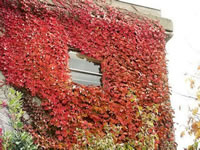Questions about Lakeview Jasmine,
|
||||
|
||||
Yellowing Indoor Palm TreesSusan wrote: "Hi there. HELP!I just bought a large indoor palm. It's about 10 feet high. I kept it in its original container for 1 week before transplanting it into a larger container. I bought new potting soil. It has drastically started to turn yellow on the fronds. I have it in my kitchen where it gets a lot of indirect light. I watered it heavily upon transplanting it. Did I over water it? Is it lacking a mineral? I'm just sick to think its going to die.Any suggestions? Due to the speed and time frame in which the fronds started turning yellow on you, I would guess that your Palm is suffering from transplant shock. Some yellowing and die back is quite normal. Since the yellowing seems extensive, you may have damaged the roots while transplanting, but Palms are generally tough plants, so it will hopefully make a complete recovery with time. Generally there are four main causes for what is happening to your plant, transplant shock, over watering (when you repot a plant they should be watered heavily, with the exception of succulents), under watering, and spider mites (the yellowing would be more gradual). Ivy Covered WallsMary wrote: "Hello Garden Helper, I came across your site today during a search to gather information on ivy. I just purchased a house that has ivy growing up on most of it.It seems very securely attached to the walls, which are plaster over concrete block (I believe). I've been advised to remove the ivy, but like the way it looks, so I am trying to determine how much damage it can/will do to the house. Any advise/wisdom you can share with me?
Anne wrote: We would like to plant boston ivy to cover our very long (100 ft) 2 story brick wall... Is there a recommended ratio of plants per square foot area? Also, how long will it take to move along up the wall? the summer, a few seasons? Thanks in advance! If you are planting standard 4 inch ivy plants, they should be planted about a foot apart and six inches from the wall. Give each plant a minimum size of 6"x6"x9" deep hole. As soon as the plant is established, give it a shot of high nitrogen liquid fertilizer (20-10-10), and feed again in August. The time that it will take to cover the wall will, of course depend on the growing conditions. A single ivy vine can easily grow six to eight feet in a year. Pinching the tips of the vine will slow the growth initially but produce a much bushier plant which in turn will cover the wall sooner. Since you are starting from scratch, you might want to consider building a lattice attached to the wall for the plants to grow on.
|
||||
Search The Garden Helper:

